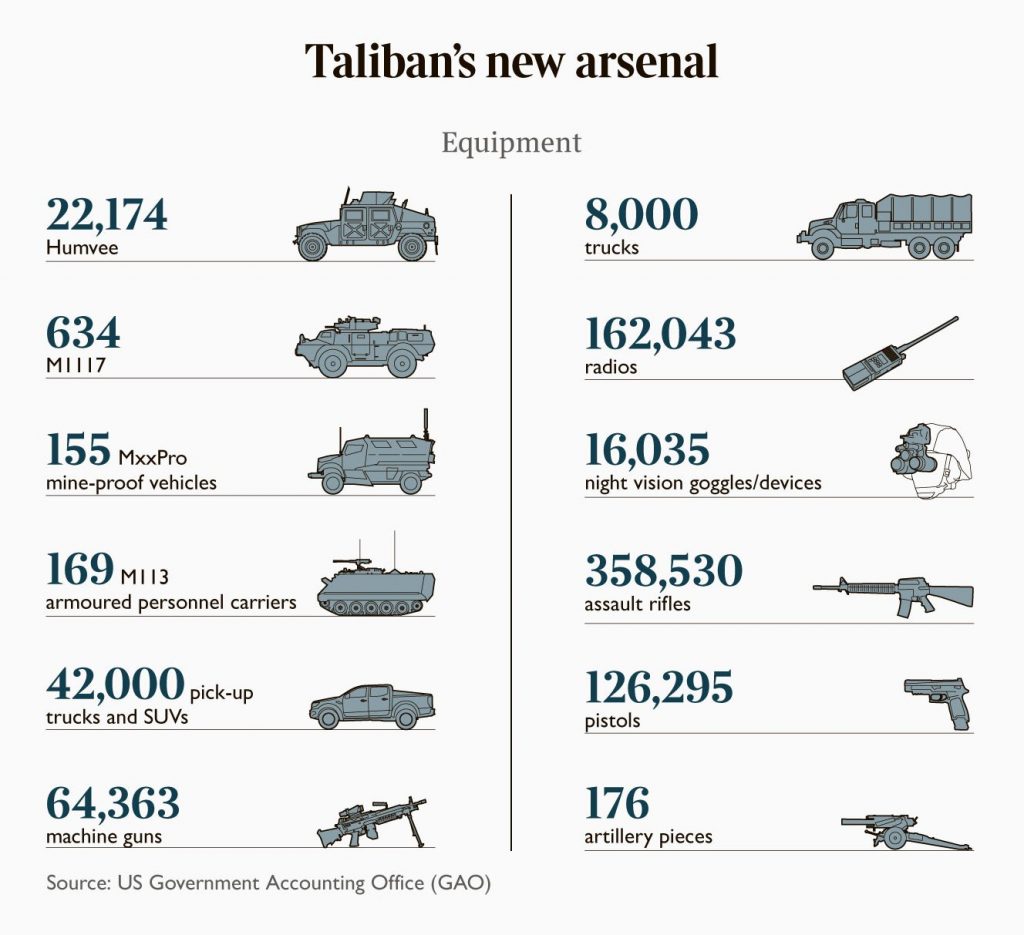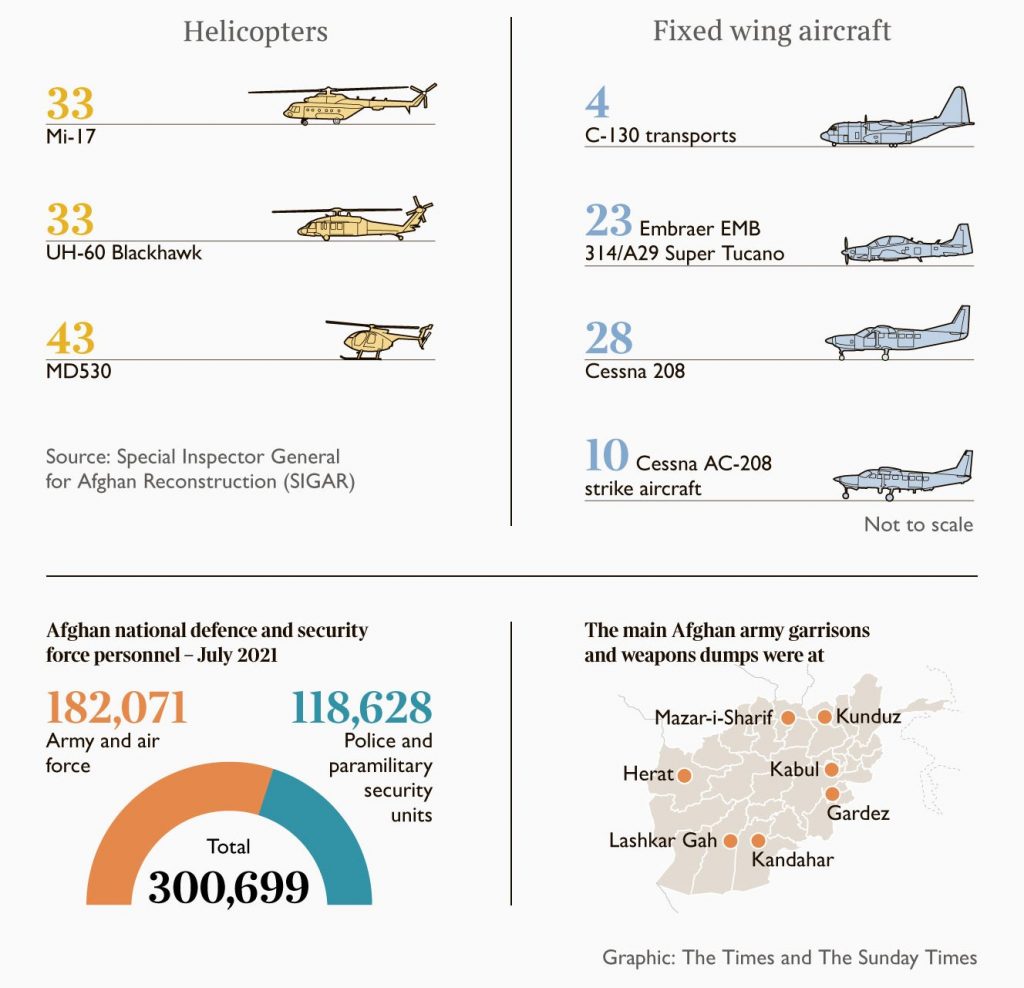Taliban captured 85 billion dollars of military hardware – now is as strong as Tajikistan’s military… maybe
In fact, Afghanistan under the Taliban will still continue to be among the weakest military in Asia, conventionally speaking.
A lot had been made and reported about the multi-billion dollars “acquisition” of the US military hardware that were left behind by the US forces and the Afghan National Army.
A whopping 85 billion dollars worth of it.
In a tweet by disclose.tv reveal the below numbers:


The numbers look very impressive, until you start to compare it with the military in the region (Central Asia)
According to Central Asian Bureau for Analytical Reporting (CABAR), the weakest of Central Asian military are the Kyrgyzstan Armed Forces.

However look at the land forces number, you will undoubtedly notice the 150 tanks that they possessed.
The Taliban, despite the newly captured equipments, do not possess tanks. Taliban make it up (in term of equipments) with a lot more armored vehicles (which cannot fight tanks) and attack helicopters (which may not have the ammunitions or setup to effectively fight tanks.
The lack of tanks would greatly comfort the countries surrounding Afghanistan, as it would mean that any potential invasion from the Taliban would be blunt. (as compared with the situation a few years ago between ISIS, Syrian rebels and the Syrian National Army). Despite the Tajikistan (9,000 men), the force multiplier the tanks could provide to defend their homeland along with comparable size in artillery would mean that Tajikistan would be effective in keeping the chaos within Afghanistan.

This is without mentioning most, if not all of the Central Asian countries are under the protection of the Russian, whom would make short work of supposed “Afghan Air Force” and the superior numbers in armored vehicles.
Despite that, interestingly, if the Taliban is able to make use of all the 100 over helicopters and the 60 over aircrafts, Taliban would have one of the biggest airforce in Central Asia, just behind Uzbekistan and Kazakhstan (the two heavy weights of Central Asian military) and just ahead of Turkmenistan.



However, this “air force”, given its make up, its mainly an air force that is designed to fighting low intensity war against rebel/guerrilla type adversary (like the Taliban themselves just 1-2 months ago) with light strike aircrafts and transport. It is also unclear how many of the former Afghan military pilots would still be around and willing to fly for the Taliban, compounded by the disabling of the aircraft (reportedly) before the American retreat. Thus much of this “Taliban Air Force” is likely to be grounded indefinitely.
So as much as what is made of the “85 billion dollars” of equipment “gifted” to the Taliban, the reality is that the Taliban did not really become a “powerful national army” overnight – they merely inherited the equipment (and the Afghan National Army’s mission) that will be necessary to maintain order and cohesion within Afghanistan, while fighting terrorists and extremist groups that are also the enemy of the Taliban as much as they are of the United States.
The only difference now is, these equipment will no longer be “misused” on fighting the Taliban, whom themselves wanted peace and stability as much as the United States had wanted while propping up the Afghan National Government regime under Ashraf Ghani. Given the make up of the Taliban forces, the amount of factions and internal politics, it would be a godsend should Afghanistan not descent into yet another civil war between rival Taliban factions/warlords.
So if I’m American, I wouldn’t be too “worried” or “distress” over the equipment loss. Because the Taliban is simply replacing the Afghan National Army in doing the exact job United States wanted them to do – but possibly do it much better.

